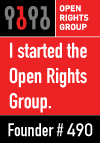I’ve had my excited genealogist head on the last few days (it looks a lot like my normal head, but a bit beardier). The reason is that Ancestry, one of the big online record publishers, has released scans and a search index for the National Probate Calendar, covering 1861-1941.
This is the index to wills and administrations from the Principal Probate Registry. When someone dies, their estate has to be disposed of. If they left a will, one or more executors are appointed to carry out its instructions. If they died intestate, an “administration” is granted and, again, executors divvy up the estate. This legal process is recorded in the Registry.
The index can be used to request a specific will from the records, but even without this the information held is of great interest to family historians. An index entry generally gives a date of death, last residence, executor and their profession (often the next of kin), and the value of the effects of the deceased.
Not only does the new index place this information online (I used to visit First Avenue House in Holborn to search the records which wasn’t exactly convenient when I lived in Scotland), but it also provides a digital index, massively speeding up the search process.
There are plenty of reasons why a search might not turn up a result: many people simply didn’t have the assets to warrant it; early on, wives’ property was considered to belong to their husbands; and the indexation is by no means perfect.
That said, I’ve already found lots of relatives in the new data. The extra information compared with death record indexes means you can be surer you’ve found the right person and I’ve been able to (excuse the morbidity) “kill off” a number of people.
There were a couple of records that took me by surprise, however. In both cases, it was the identity of the executors that was unexpected.
My first cousin, four times removed:
GIBBS Emmanuel of Thanksgiving-lane Binfield Heath Oxfordshire died 2 May 1938 Probate Oxford 6 July to Martha Ann Gibbs widow the right honourable Godfrey Walter baron Phillimore and the honourable Anthony Phillimore lieutenant H.M. army. Effects £624 6s. 5d.
Quite why three executors were required to handle the assets of a deceased bricklayer, and why two of the executors should be the 2nd Lord Phillimore and his son, are beyond me at the moment.
My first cousin, thrice removed:
ROBINSON William Thomas of Foxhil Wanborough Wiltshire died 1 July 1918 Probate London 9 October to Frank Curzon theatre proprietor. Effects £15556 18s.
Frank Curzon was a successful Edward theatre manager and William Thomas Robinson was a race horse trainer, with no obvious connection to the theatre. But Frank Curzon’s Wikipedia page notes he bred race horses, including an Epsom Derby winner, so that seems the likely explanation. And yes, £16k was a lot of money in those days…
You can search the probate indexes here, but I suspect you’ll need an Ancestry subscription to look at the scanned pages.


Recent comments